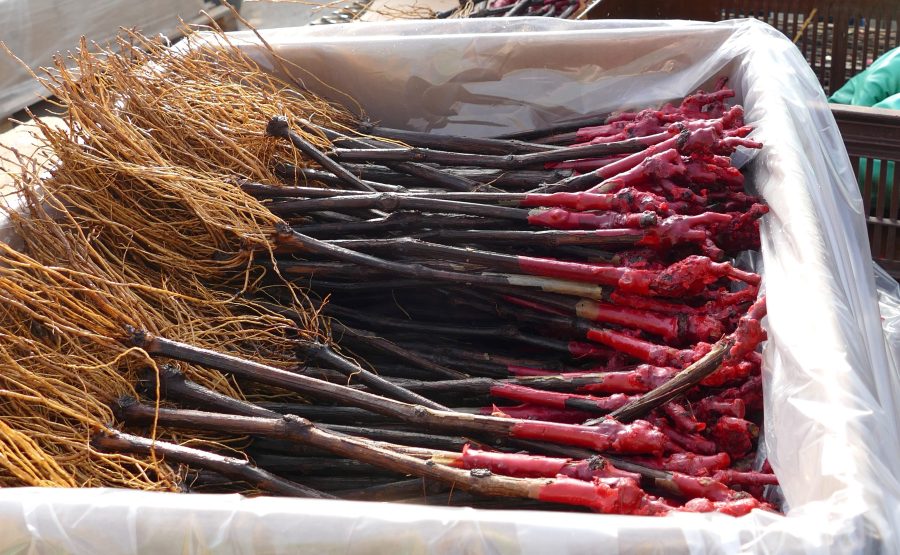Receiving your vines is possibly the most exciting moment for a new vineyard. A moment filled with excitement, anticipation and satisfaction. However, there are many considerations to be made to ensure their safe arrival and to give them the optimum chance of success.
Before your vines arrive, you need to organise where they will be stored in the days before planting. Ideally, this cold store will be a dark room maintained at a constant temperature of around 4°C. The majority of vines are sourced from nurseries on the continent and as such, will have potentially spent a few days in transit. While this will not affect the vines, it is important they are transferred to your cold store as quickly as possible. Although it may be tempting to open the bags and sneak a peek at your new bundles of joy, it is best practice to keep the bags sealed to safeguard their good condition until they are required for planting. The last thing you want is for your vines to have dried out or woken up prematurely from their dormant state.
The next stage is to determine your preferred pre-planting methodology. There are several schools of thought on what treatment to give your vines before planting, including trimming their roots, hydrating them in water or placing the roots in a mycorrhizal dip shortly before they’re put in ground. With such diverse options available, we asked the nurseries we purchase from in France and Germany for their thoughts and recommendations. Their advice is that the vines should be planted immediately after they are removed from the cold store, (or at maximum, a day after) with no interventions that could potentially expose the plant to situations where pathogens are present. Understandably there will be occurrences when the vines need removing from the cold store and transporting to the vineyard site a day or two in advance of planting. As such, these vines should be kept out of direct sunlight, ideally in the shade, to prevent unnecessary warming and drying out.
Prior to planting you should have suitably prepared your ground. The site should be well-drained, (with the installation of drainage if necessary) sub-soiled and fertilised in advance. It should be free from weeds and have a seed bed of 30cm. For larger sites it is preferable to plant using a machine as it is quick to setup and requires very little in terms of marking out, aside from initially setting the planting line for the field and defining the borders/headlands. Machine planting is extremely fast and accurate, accomplishing up to 15,000 vines per day.
However, hand planting takes longer to setup in order to achieve the required accuracy. Using an auger or planting spade, a team of five labourers can expect to mark out and plant 1,000-2,000 vines in one working day.
With both planting methods, and where ground has been ill-prepared, there needs to be constant awareness of potential consequences and pitfalls. The most common are open trenches, which are more prevalent in clay-based soils or chalk soils with a clay subsoil. These trenches don’t close correctly after the planting machine has passed through. The polishing of trenches, (creating a smooth, solid surface to the trench walls) can occur with either planting method in wet conditions and/or ill-prepared land. This is another cause for concern and should be avoided where possible as polished walls inhibit root development and growth.
If your planting schedule is planned in advance, taking into account the above considerations, you will give your new vines the best beginning to their long, fruitful lives. The only thing left to do is pray for a sunny planting day.




